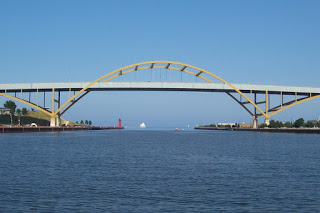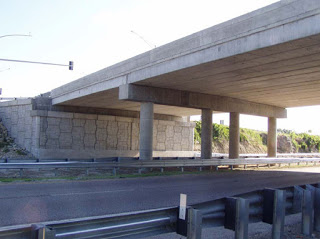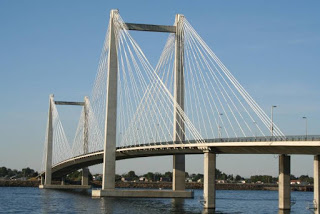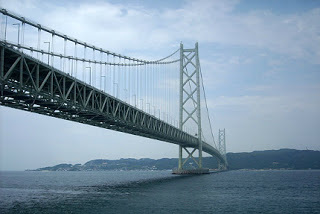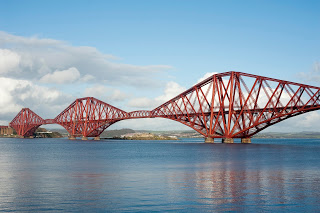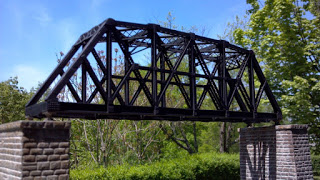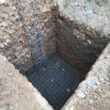Types of bridges in Civil Engineering
Arch bridges
These bridges uses arch as a main structural component (arch is always located below the bridge, never above it). They are made with one or more hinges, depending of what kind of load and stress forces they must endure. Examples of arch bridge are “Old Bridge” in Mostar, Bosnia and Herzegovina and The Hell Gate Bridge in New York.
An arch bridge is a bridge with abutments at each end shaped as a curved arch. Arch bridges work by transferring the weight of the bridge and its loads partially into a horizontal thrust restrained by the abutments at either side. A viaduct (a long bridge) may be made from a series of arches, although other more economical structures are typically used today.
Arch bridges are one of the oldest types of bridges and have been around for thousands of years. Arch bridges have great natural strength. They were originally built of stone or brick but these days are built of reinforced concrete or steel. The introduction of these new materials allow arch bridges to be longer with lower spans. Instead of pushing straight down, the load of an arch bridge is carried outward along the curve of the arch to the supports at each end. The weight is transferred to the supports at either end. These supports, called the abutments, carry the load and keep the ends of the bridge from spreading out.
Grider or Beam Bridges
Girder bridges are the simplest bridge type in structure and consist of steel beams shaped to an I-section or box section, called a plate girder bridge or a box girder bridge, respectively. Girder bridges are comprised of deck slabs, on which vehicles and people pass, and of main girders supporting the deck slabs. Deck slabs include RC deck slabs, steel deck slabs, composite deck slabs, and PC deck slabs. Bridges where the deck slabs and the main girders work together to resist loads are called composite girder bridges, and bridges designed to resist loads with the main girders only are called non-composite girder bridges. In general, effective spans of about 25 to 150
A girder bridge, in general, is a bridge that uses girders as the means of supporting the deck.[1] A bridge consists of three parts: the foundation (abutments and piers), the superstructure (girder, truss, or arch), and the deck. A girder bridge is very likely the most commonly built and utilized bridge in the world. Its basic design, in the most simplified form, can be compared to a log ranging from one side to the other across a river or creek. In modern girder steel bridges, the two most common shapes are plate girders and box-girders.
Cable Stayed Bridges
At first glance, the cable-stayed bridge may look like just a variant of the suspension bridge, but don\’t let their similar towers and hanging roadways fool you. Cable-stayed bridges differ from their suspension predecessors in that they don\’t require anchorages, nor do they need two towers. Instead, the cables run from the roadway up to a single tower that alone bears the weight. The tower of a cable-stayed bridge is responsible for absorbing and dealing with compressional forces. The cables attach to the roadway in various ways.
A cable-stayed bridge has one or more towers (or pylons), from which cables support the bridge deck. A distinctive feature is the cables which run directly from the tower to the deck, normally forming a fan-like pattern or a series of parallel lines. This is in contrast to the modern suspension bridge, where the cables supporting the deck are suspended vertically from the main cable, anchored at both ends of the bridge and running between the towers. The cable-stayed bridge is optimal for spans longer than cantilever bridges, and shorter than suspension bridges.
Suspension Bridges
A suspension bridge is a type of bridge in which the deck (the load-bearing portion) is hung below suspension cables on vertical suspenders. The first modern examples of this type of bridge were built in the early 19th century, Simple suspension bridges, which lack vertical suspenders, have a long history in many mountainous parts of the world.
Like Us on Facebook!
As the name implies, suspension bridges, like the Golden Gate Bridge or Brooklyn Bridge, suspend the roadway by cables, ropes or chains from two tall towers. These towers support the majority of the weight as compression pushes down on the suspension bridge\’s deck and then travels up the cables, ropes or chains to transfer compression to the towers. The towers then dissipate the compression directly into the earth.
Subscribe Us on YouTube!
Cantilever Bridge
A cantilever bridge is a bridge built using cantilevers, structures that project horizontally into space, supported on only one end. For small footbridges, the cantilevers may be simple beams; however, large cantilever bridges designed to handle road or rail traffic use trusses built from structural steel, or box girders built from prestressed concrete.
First cantilever bridges appeared in 19th century when a need for longer bridges presented itself. To solve the problem of length, engineers of that time found out that many supports would distribute the loads among them and help to achieve length.
Truss bridge
A truss bridge is a bridge whose load-bearing superstructure is composed of a truss, a structure of connected elements forming triangular units. The connected elements (typically straight) may be stressed from tension, compression, or sometimes both in response to dynamic loads. Truss bridges are one of the oldest types of modern bridges.
Truss bridge is a type of bridge whose main element is a truss which is a structure of connected elements that form triangular units. Truss is used because it is a very rigid structure and it transfers the load from a single point to a much wider area. Truss bridges appeared very early in the history of modern bridges and are economic to construct because they use materials efficiently.

